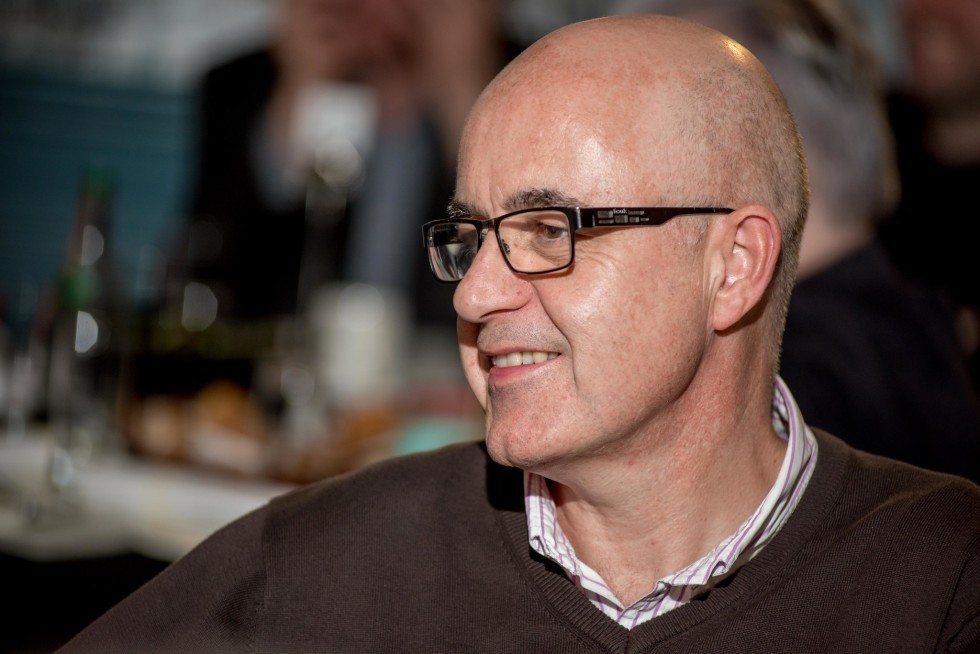
After 20 years in business, the Dublin-based creative agency Chemistry will close for business today, Friday January 17th, just several months shy of its 21st anniversary. The decision to close the business follows a difficult 2019 which saw it lose a number of clients and rack up a substantial six figure loss for the year.
While attempts were made to stave off the closure – including overtures to the agency’s 45% shareholder Ogilvy & Mather Group as well as other possible white-knights- the agency’s co-founder Ray Sheerin made the difficult decision to close the agency following a month-long engagement process with staff and clients. Over the coming weeks, an orderly wind-down of the business will take place and all creditors will be paid.
While the agency may be closing its doors, it leaves behind a rich creative legacy which has seen it win numerous Irish and international awards, including a coveted Cannes Lions in 2006 and, more recently, it was named as Agency of the Year at the Kinsale Sharks Festival in 2019.
What Lies Ahead
Speaking to Adworld.ie, Ray Sheerin says that the Irish agency landscape faces considerable pressures and challenges at the moment and, in his view, these challenges are unlikely to improve any time soon.
“Talking to peers and friends about the fact that Chemistry was going to close its doors after almost 21 years in business, I used an expression which some of them found shocking. It was that the landscape for independent creative agencies is virtually uninhabitable at present (having been just inhospitable for about 10 years since the economy nose-dived after the banking crisis),” he says.
The Job of Creativity
“I have written (and ranted) on multiple occasions in the past decade about the importance of creativity. Some 70 years ago, ad legend Bill Bernbach wrote: creativity is the last unfair advantage we’re legally allowed to take over our competitors”. In a world where there is so much product and service homogeneity and USPs no longer exist, what brands say has become far less important than how they say it. And that’s the job of creativity,” Sheerin adds.
“What brands say has become far less important than how they say it. And that’s the job of creativity.”
“In my experience, the market agrees with these sentiments. Nobody will argue against creativity. But few champion it to the extent that is needed. Because doing outstanding creative work is not just a flash of genius – it’s a slog. Outstanding creative breaks rules, it behaves differently to the norms – so it is challenging for everyone involved, client and agency alike. That’s why it is far easier to produce work that “no one has a problem with”: and that’s what accounts for the 89% of all communications which are neither noticed nor remembered by consumers, according to another ad legend, Dave Trott,” he says.
Independent Agencies
Sheerin says that it’s vitally important that the Irish market has a healthy independent agency sector.
“In any market, it’s the independent agencies which generally produce better work. Their independence allows them to fight for work in a way that networked agencies just don’t have the autonomy to. But it comes at a cost. Either in the premium pricing necessary to fund it or, as in our case, at the expense of our own business.
“In any market, it’s the independent agencies which generally produce better work.”
“That’s the first harsh reality that faces creative agencies today. Trying to produce work that is better than the rest of the market, across an ever-increasing number of media touchpoints is very resource-intensive. It means investing in skilled people, in multiple disciplines, which equals a heavy staff cost. Over our 21 years, we proved that we could run one of the best agencies in the market. But we could no longer do so profitably,” he says.
Over the last 20 years in business, he says the industry has changed considerably and some of these changes have not necessarily benefited the industry or delivered on some of the promises they were meant to deliver.
“Across Chemistry’s lifespan, we have seen enormous changes in our industry. When we set up, in 1999, the ‘de-coupling’ of media from creative agencies was a meta-trend. My view, at the time, was that this would be to the detriment of the industry overall, resulting in an overall weaker, less integrated offering to clients,” he says.
“So, will the current trend for media agencies to expand into creative result in a better overall client experience? Time will tell – but given just how difficult it is to produce great creative, it will be a major culture shock for media agencies. I believe that re-coupling will prove far more challenging than de-coupling,” he says.
“I believe that re-coupling will prove far more challenging than de-coupling.”
The Rise of In-housing
The arrival of in-housing specialists has also served to undermine the traditional agency model, he says.
“We’re also seeing a trend towards ‘in-housing’, where clients bring some agency services in house. Mostly, it’s studio-type services – production work where it’s all about efficiency and consistency rather than added value. But, for agencies, it’s another important income stream that’s drying up. And one which has helped fund the more expensive added value services,” he says.
Remuneration
Sheerin also points out that how agencies are properly remunerated for their services needs to change and that the current blended rate model is not working.
“In a market which is priced on a blended rate basis, how can agencies provide their most value-adding, most expensive services at the level of low blended rates which is now the market norm? Strategic planners, creative directors, senior creative and client service staff merit the higher salaries that they earn – but charging them out at market blended rates just doesn’t work commercially,” he says.
“Ironically, maybe the third harsh reality, the entry of consultancies into the creative space, will be the ill wind that brings some good. It’s an ill wind because, while in-housing is nibbling away at agency incomes at one end of the value chain, consultancies are tucking in at the top end. But maybe the good it will bring, given consultancies’ high charge-out rates, is to force a revaluation of these services. It might even kill the blended rate once and for all,” Sheerin says.
Unfortunately for the advertising sector, some of these challenges and pressures may take some time to sort themselves out but he adds that independent agencies will continue to find the environment very tough to operate in.
“I believe it will take time for the tectonic plates to settle, for the effects of media agencies providing creative, in-housing and consultancies to be proven, or otherwise. At the end of the process, I also believe that the value of creativity will be better understood, appreciated and valued. But, while all that is happening, it is going to be very difficult for creative agencies, especially independent agencies to survive. Cherish your creative agencies: you’ll miss them when they’re gone,” he concludes.




















